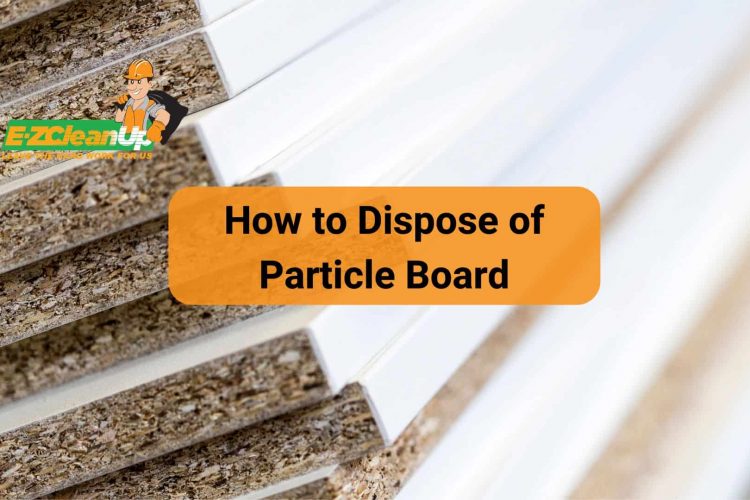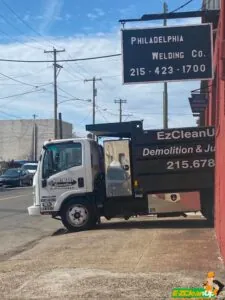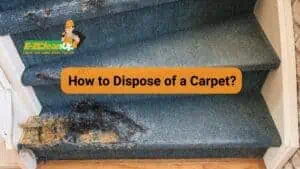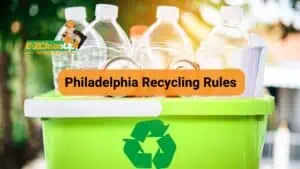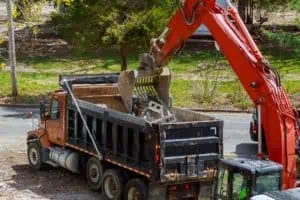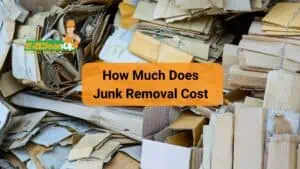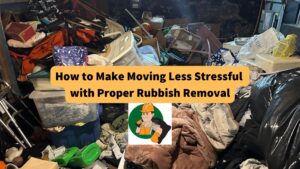To manage particle board disposal, assess its condition first; if reusable, upcycle or donate to extend its life. For recycling or disposal, contact local waste management or recycling centers for guidance on handling this material in an environmentally friendly manner.
Read more about how to dispose of particle board in our guide.
Pre-Disposal Considerations
While particle board leverages recycled timber or timber waste, the chemicals used in its creation, particularly formaldehyde-based resins, pose environmental and health risks. These resins can leach formaldehyde into the atmosphere over time. It can cause irritation and, in high concentrations, severe health problems.
When you’re preparing to dispose of particle board, it’s essential to consider a few key factors to ensure the process is as eco-friendly and efficient as possible. Here’s what you need to know to help you through the pre-disposal considerations:
Identifying Particle Board Material
Particle board, also known as chipboard, is a type of engineered wood product made from wood chips, sawdust, and a synthetic resin or binder. It’s crucial to identify the particle board as it differs from other wood products like MDF (medium density fiberboard) or plywood in terms of composition and recycling options.
Particle board is recognized by its relatively uniform and fine texture on the surface and can be distinguished by the larger wood chips visible on its sides.
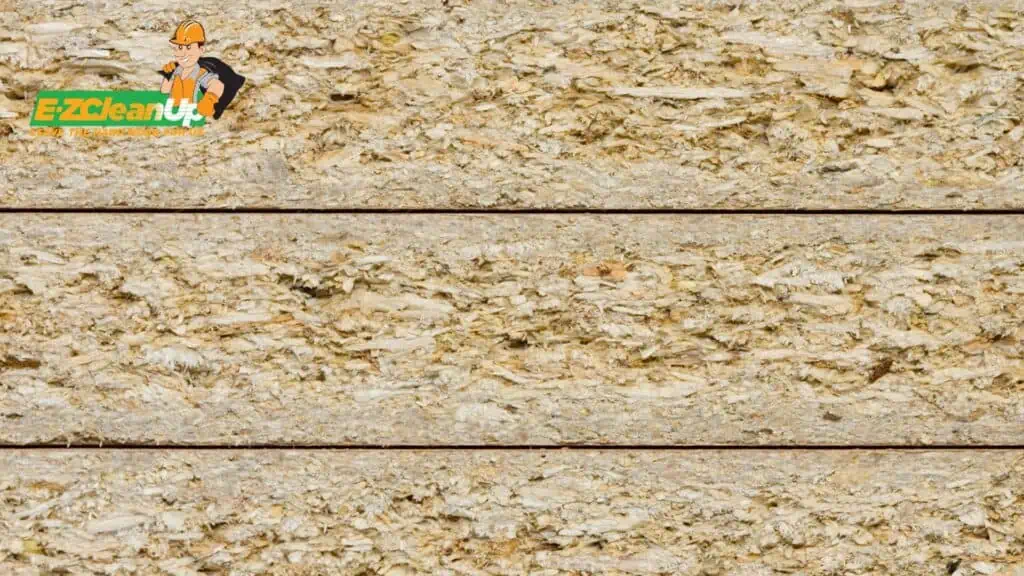
Assessing the Condition of the Particle Board
Before deciding on the best disposal method for your particle board, assess its condition. Particle board is versatile and used in various applications, such as furniture, kitchen cabinets, and wall panels, primarily in dry conditions due to its susceptibility to moisture.
If the particle board is in good condition, consider repurposing or donating it. However, if it’s damaged, especially by water, which can cause swelling and disintegration, recycling or disposal might be your only options.
The cost-effectiveness of particle board makes it a popular choice for budget-friendly projects. Still, its durability doesn’t usually surpass more than 10 years. When considering disposal, keep in mind the material’s limitations and potential for reuse or recycling.
For disposing or recycling particle board, especially if it’s in poor condition or you’re unsure about the presence of hazardous materials like formaldehyde, consult with local waste management or recycling centers for guidance. They can provide specific instructions based on the material’s condition and your local regulations to ensure safe and environmentally responsible disposal.
Options for Disposing of Particle Board
Disposing of particle board responsibly involves understanding its recyclability and preparing it properly for the recycling process.
1. Recycling
Recycling particle board is feasible. However, this is more complex than recycling materials like paper or plastic. This is because particle board must be separated from non-wood materials, such as metal or plastic, before it can be processed.
Additionally, the presence of chemicals like formaldehyde in some particle boards can complicate recycling efforts. To find recycling facilities that accept particle board, consider contacting local waste management services or using online resources designed to locate recycling centers. Some facilities may accept particle board for recycling into new wood products.
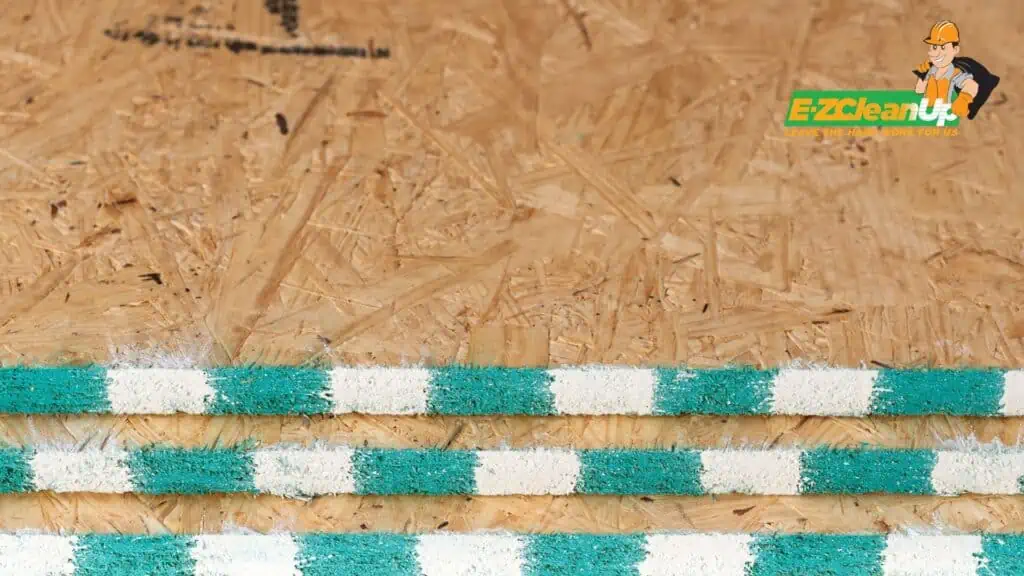
Preparing Particle Board for Recycling
Before recycling particle board, ensure it is clean and free from contaminants. This may involve removing any nails, screws, or other non-wood materials. In cases where the particle board is damaged or contains hazardous materials, special care should be taken to handle and dispose of it properly.
Considerations for Particle Board Disposal
The recyclability of particle board also depends on factors like the energy consumption involved in its production and any hazardous materials it may contain. These factors need to be considered when determining the best disposal method.
High energy consumption and the presence of hazardous chemicals can make recycling more challenging. These will require specialized disposal methods to prevent environmental contamination.
2. Repurposing or Upcycling
Transforming particle board into something new is a creative and eco-friendly way to reduce waste.
Creative Ideas for Reusing Particle Board
Particle board, with its versatile nature, can be turned into various items. Here are some inspiring ideas on how to upcycle particle board:
- Furniture Updates: You can give a new look to particle board furniture by adding decorative molding, changing furniture feet, or applying a fresh coat of paint. The use of molding can enhance its appearance. You can also add furniture feet for a more sophisticated look, or use fabric to add a unique touch to the back panel.
- Shelving and Storage: Cut the particle board to size for new shelving in closets or garages.
- Art and Decor: Use larger pieces as canvases for art projects or to create unique home decorations.
- Garden Projects: Small pieces can be handy in the garden, whether as markers or temporary paths.

Communities and Platforms for Sharing Upcycling Projects
Engaging with online communities can provide additional inspiration and support for your upcycling projects. Here are some recommended platforms:
- Pinterest and Instagram: These sites are ideal for finding inspiration and sharing your projects using specific hashtags like #upcycling and #DIYdecor.
- Reddit: Subreddits such as r/DIY and r/upcycling are great places to share your work and get feedback.
- DIY and Upcycling Blogs: You’ll find a lot of websites that offer extensive guides and ideas for various projects, from simple decorations to more complex furniture transformations.
3. Donating Particle Board
While some organizations have specific guidelines on what they can accept, here’s how you can donate particle board and related items effectively.
Organizations That Accept Particle Board
Here are some organizations that you can contact to confirm their current acceptance policies for the items you want to donate, including particle board, and schedule a pickup:
- Habitat for Humanity ReStores: They accept donations of new and gently used building materials, furniture, and appliances, which can include items made from or containing particle board.
- Goodwill: This organization accepts a wide range of items, including furniture, clothing, electronics, and more. Donations help fund job training and employment programs for people facing barriers to employment.
- Pick Up Please: This is a service of the Vietnam Veterans of America, which offers easy online scheduling for furniture donation pickups. They accept household goods, electronics, smaller furniture, and more, which support veterans’ programs.
- Furniture Banks: Donating to a Furniture Bank helps families in need set up their homes. They accept furniture, dishes, small appliances, and more.
- The Arc: With over 600 chapters, The Arc supports individuals with intellectual and developmental disabilities. They accept a variety of donations, including furniture, clothing, electronics, and more.
4. Disposal as Waste
The disposal of particle board requires specific considerations, given its composition and the potential environmental impact.
Contacting Local Waste Management Services
Before deciding on disposal, contact your local waste management services to inquire about the proper disposal method for particle board in your area. Regulations and capabilities can vary, which can affect how particle board should be discarded.
In some regions, such as King County, certain restrictions apply to the disposal of wood, including particle board. Clean wood that is untreated and unstained, like particle board, might be accepted at specific facilities. However, it’s crucial to verify with local services first.
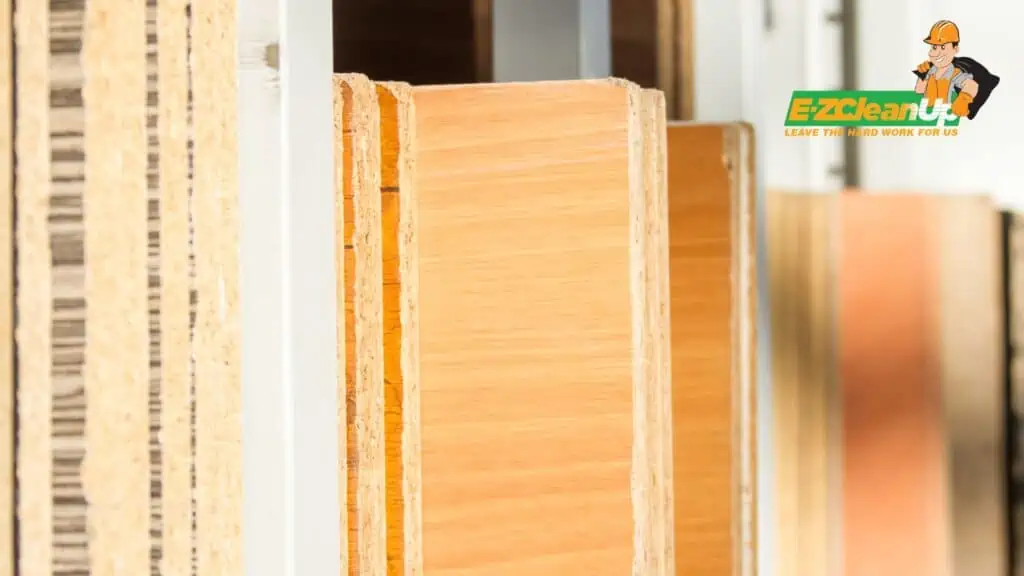
Particle Board Disposal Policies
Particle board, given its construction—wood chips bound with resin—poses challenges in recycling and disposal. While some recycling programs do accept particle board, the process is complex due to the need to separate the wood from the resins used to bind it. The board is then broken down and combined with a resin binder to create a new material.
For small quantities of manufactured wood, including particle board, local guidelines may allow for disposal in regular trash collection, provided it fits within certain size restrictions. However, for larger pieces or amounts, taking the material to a designated landfill site might be necessary, where landfill charges could apply.
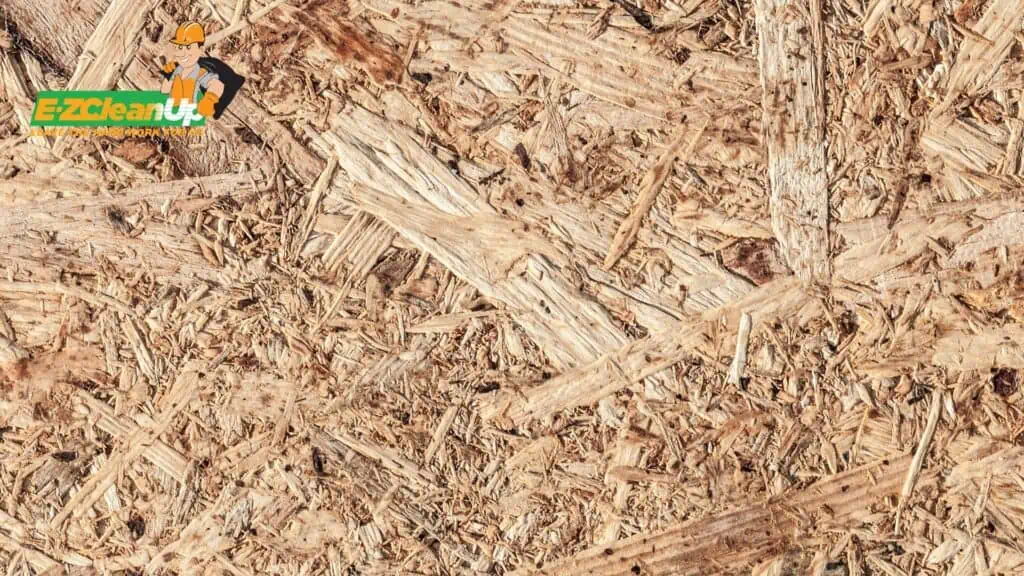
Eco-Friendly Disposal of Particle Boards
Disposing of particle board in an eco-friendly manner not only addresses environmental concerns but also promotes sustainability and health in our living spaces.
Choosing Alternatives to Particle Board
To minimize environmental impact, consider these eco-friendly alternatives:
- Bamboo: This rapidly renewable resource offers durability and requires minimal water and chemicals for cultivation.
- Reclaimed Wood: Utilizing wood from old buildings or barns reduces demand for new timber and prevents landfill waste.
- Engineered Wood Products: Made with eco-friendly adhesives, these products optimize wood resources and provide stability and strength.
- Recycled Plastic Lumber: This material reduces plastic waste and offers durability and low maintenance for outdoor use.
- Cork: Harvested from the bark of cork oak trees without harming them, cork is renewable, water-resistant, and has acoustic properties suitable for furniture construction.
Additionally, innovations like MDF made from rice straw offer a formaldehyde-free alternative to traditional particle board. This material is produced from agricultural waste and involves no toxic chemicals, making it a healthier option for indoor environments.
Maintenance Tips to Extend Lifespan
Here are the top tips to follow to keep your particle board in good condition for a long time:
- Avoid Moisture: Keep particle board furniture away from moisture to prevent swelling and damage. Use coasters and placemats to protect surfaces from spills.
- Regular Cleaning: Dust and clean particle board furniture regularly with a dry cloth to maintain its appearance and integrity.
- Immediate Repairs: Address any damage or wear immediately to prevent further deterioration. This might include tightening loose screws or applying a sealant to exposed edges.
Personal Safety Measures
When working with particle board, it’s important to protect yourself from potential harm. The material’s composition includes chemicals that can be harmful if inhaled, so wearing a mask can prevent the inhalation of dust and chemical emissions.
Since particle board is prone to producing a significant amount of dust when cut or sawn, also consider wearing safety goggles to protect your eyes. Additionally, gloves can help protect your hands from splinters and abrasions during handling.
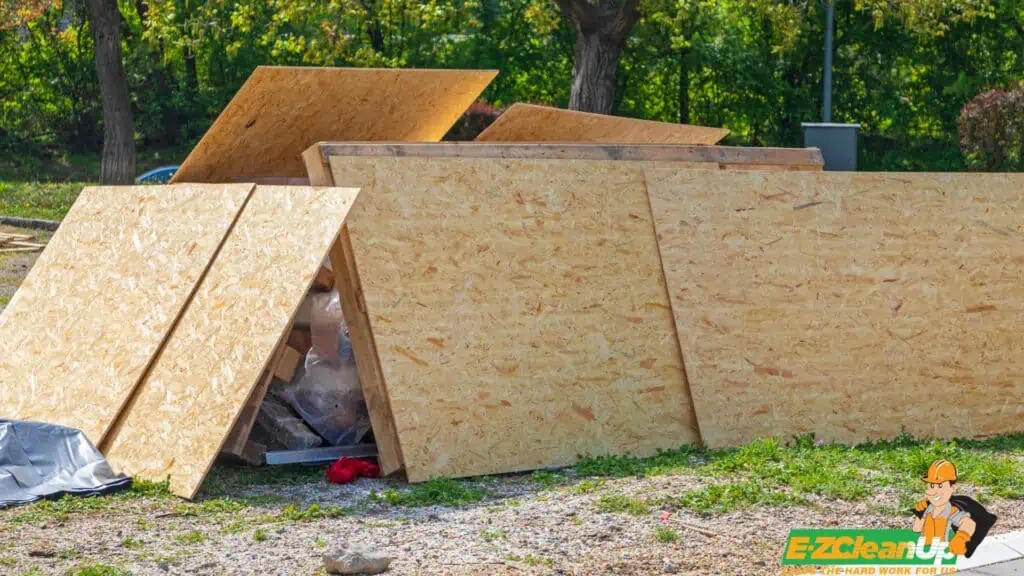
Transporting Particle Board Responsibly
Transporting particle board requires attention to its size and fragility. Due to its lightweight nature, particle board is easier to carry and move compared to denser materials. However, its susceptibility to damage from impact and moisture means that it should be transported with care to avoid exposure to water or rough handling that could cause the material to disintegrate.
When moving large sheets or multiple pieces, using a vehicle that can safely accommodate the size without bending or breaking the boards is crucial. Covering the particle board with a tarp or plastic sheeting can provide protection from moisture during transportation.
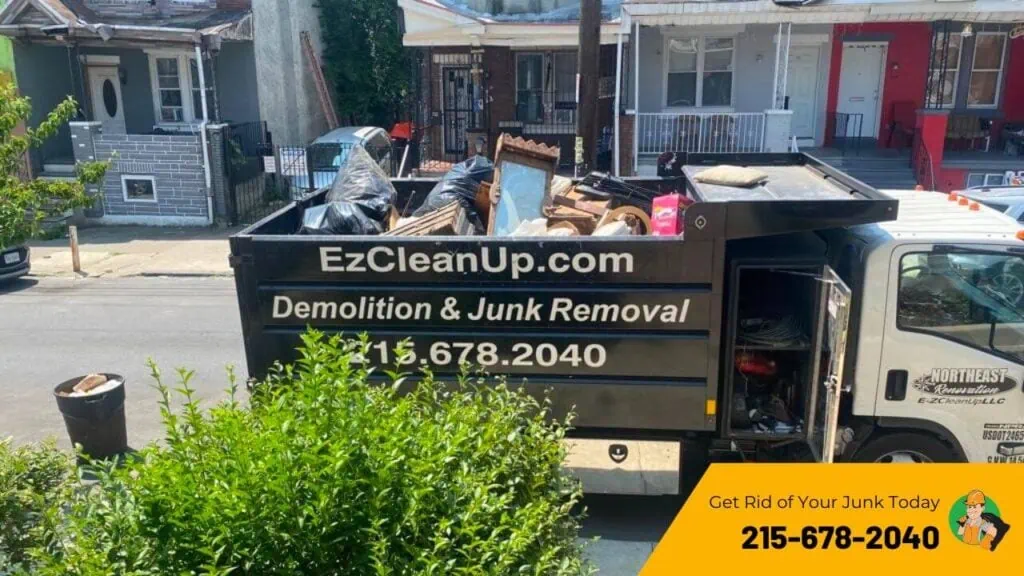
EZ Solutions for Particle Board Disposal
The challenge of responsibly discarding particle board is no small task. EZ CleanUp provides the expertise and services necessary to manage this process efficiently.
We offer professional removal and disposal services that cater to your needs, including particle boards. Reach out to us and let us clear the way for you.

